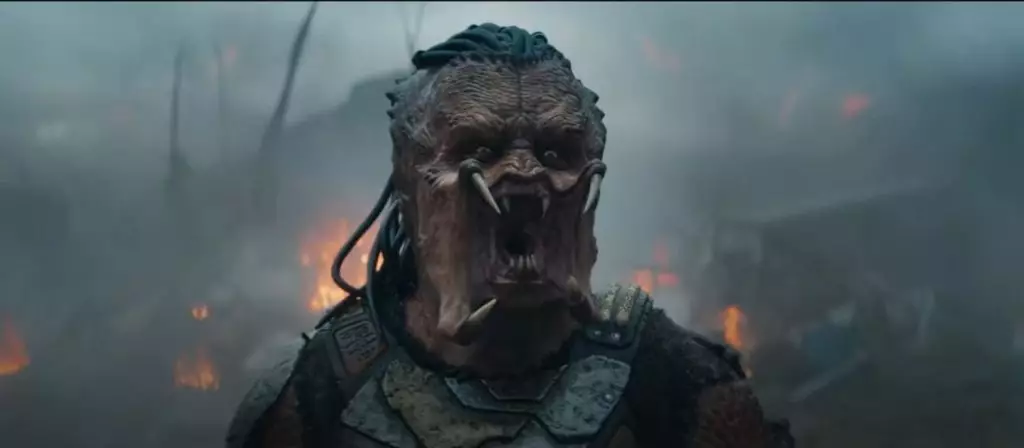The latest foray into the Predator universe signals a significant departure from its traditional hunt-and-slash roots. Rather than relying solely on visceral action and outdoor survival thrill rides, “Predator: Badlands” boldly ventures into uncharted emotional territory. The franchise, historically rooted in high-tension combat with human protagonists as the prey, now explores stories centered around non-human characters and complex relationships. Such a shift demonstrates a willingness by the studio to evolve the franchise, tapping into a richer narrative vein that emphasizes empathy, internal conflict, and unlikely friendships.
This approach is refreshingly daring, offering audiences more than just spectacle. It delves into the psyche of the predator species, humanizing characters previously seen as mindless killers. The choice to feature a Young Predator protagonist on a quest for self-discovery hints at a deeper exploration of identity, acceptance, and moral ambiguity within the universe—a move that could elevate the franchise’s storytelling to higher artistic levels. The presence of a synthetic android and themes of kinship and exile add layers of complexity that might resonate emotionally much more profoundly than past installments.
Challenging Conventions with Practical Effects and Rich Worldbuilding
One of the most striking aspects emphasized during the panel was the commitment to practical effects and authentic production experiences. Shooting in New Zealand, with practical effects replacing CGI where possible, signifies a deliberate effort to ground the film in tangible reality. This decision not only enhances visual believability but also suggests a respect for craftsmanship that elevates the overall quality.
Furthermore, the story’s setting on the desert planet Kalisk introduces a visually distinct environment that can become a character unto itself. The barren, treacherous terrain echoes the story’s themes of survival and exile, immersing viewers in a bleak but captivating aesthetic. The island of Kalisk becomes a brutal proving ground for characters’ resilience, forcing them to confront not just external threats but their internal struggles.
The creative risks taken here could prove to be a strategic move that revitalizes the franchise, making it more relatable to modern audiences seeking emotional depth and immersive worlds. While audiences are frequently bombarded with CGI spectacle, the emphasis on practical effects promises a tactile sense of realism that could set “Predator: Badlands” apart from its predecessors.
Redefining Character Dynamics and Narrative Focus
Where the franchise traditionally centered around human characters fighting against a deadly alien hunter, this installment shifts focus to predator characters themselves. The young predator Dek’s journey to find the ultimate adversary, coupled with his relationship with his outcast brother Kwei, reveals an intent to examine the predator species as more than just sentient killing machines. This kind of character-based storytelling could radically alter how fans perceive the franchise’s universe—transforming it into a saga about familial bonds, rivalry, and self-discovery.
The inclusion of a half-destroyed android character, Thia—whose worn and stitched-up appearance hints at a narrative history—further exemplifies this shift. Dek’s act of carrying her and seeking deadly beasts as trophies for his father suggests themes of honor, legacy, and rebellion. These elements resonate with a broader trend in modern genre filmmaking, where audiences crave nuanced characters whose motivations extend beyond mere violence.
Director Dan Trachtenberg’s previous success with “Prey” demonstrates a clear talent for blending visceral action with emotional storytelling. His involvement suggests that “Predator: Badlands” could become a franchise redefinition, elevating its quality and depth in ways that might even challenge the perception of the genre itself.
Implications for the Future of the Franchise
This strategic shift has profound implications for the franchise’s future. By exploring themes of kinship, exile, and moral ambiguity, “Predator: Badlands” sets a precedent for how the franchise can grow beyond its action-first roots. It has the potential to attract a new audience demographic—those interested in character-driven stories and complex mythologies—while still satisfying longtime fans with adrenaline-fueled sequences and stunning visuals.
Moreover, the decision to release the film exclusively in theaters underscores a confidence in its cinematic experience. Unlike streaming releases that often prioritize convenience over quality, this theatrical push suggests a belief that “Predator: Badlands” offers an audiovisual spectacle worth experiencing on the big screen, possibly with visceral practical effects that heighten immersion.
The evolution of the Predator franchise as exemplified by “Badlands” is a testament to creative courage and an understanding of contemporary storytelling trends. By focusing on emotional depth, authentic visuals, and intricate character dynamics, it demonstrates a willingness to reinvent itself—a move that could very well secure its relevance in an increasingly saturated genre market.
